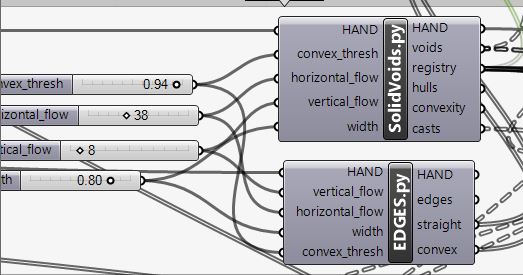Convex and Solid-Voids

About
Convex and Solid-Voids is a research project developed by the Design Computing Group at Faculty of Architecture, University of Lisbon.
Convex voids are 3d representations of open urban spaces auto-generated based on the input of surrounding buildings, topography and other urban limits. They are utilized to measure multiple morphological attributes regarding urban spaces and are aggregated to form Solid-Voids which act as containers for this data.
Publications
Sileryte, R., Cavic, L., & Beirao, J. N. (2017). Automated generation of versatile data model for analyzing urban architectural void. Computers, Environment and Urban Systems, 66, 130–144.
Cavic, L., Sileryte, R. & Beirão, J.N., 2017. 3D-INFORMED CONVEX SPACES – The Automated Generation of Convex Representation for Open Public Space Analysis. In 11th International Space Syntax Symposium. Lisbon.
Beirão, J. N., Chaszar, A., & Cavic, L. (2015). Analysis and Classification of Public Spaces Using Convex and Solid-Void Models, 102.
Cavic, L. & Beirão, J., 2014. Open Public Space Attributes and Categories – Complexity and Measurability. Magazine AR Architecture, Research, 2014/2 Volume XV, pp.15–24.
Beirão, J. N., Chazsar, A., & Cavic, L. (2014). Convex and Solid-Void Models for Analysis and Classification of Public Spaces. In R. S. N. Gu, S. Watanabe, H. Erhan, M. Hank Haeusler, W. Huang (Ed.) (pp. 253–262).








